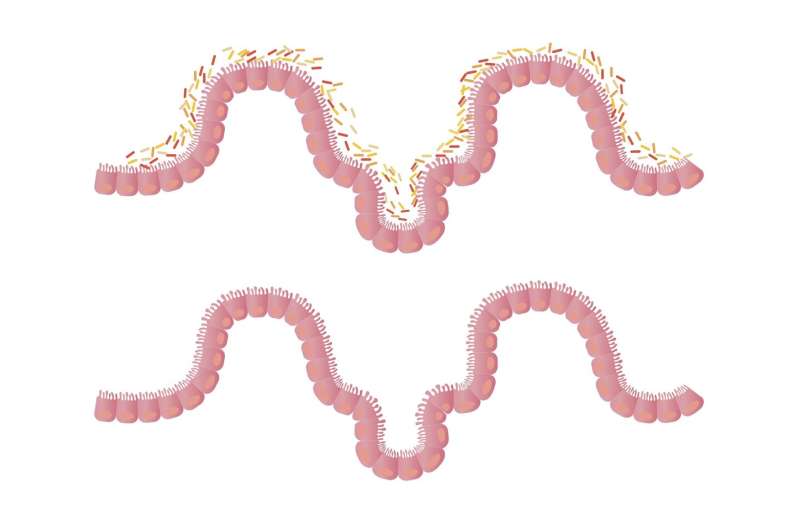This article has been reviewed according to Science X's editorial process and policies. Editors have highlighted the following attributes while ensuring the content's credibility:
fact-checked
peer-reviewed publication
trusted source
proofread
Researchers identify previously unknown step in cholesterol absorption in the gut

UCLA researchers have described a previously unknown step in the complex process by which dietary cholesterol is processed in the intestines before being released into the bloodstream—potentially revealing a new pathway to target in cholesterol treatment.
Although an existing drug and statins impact part of the process, an experimental drug being studied in UCLA research labs appears to specifically target the newfound pathway, possibly adding a new approach to the cholesterol management toolbox.
"Our results show that certain proteins in the Aster family play a critical role in moving cholesterol through the absorption and uptake process," said Dr. Peter Tontonoz, a UCLA professor and researcher in Pathology and Laboratory Medicine and Biological Chemistry, senior author of an article in Science. "The Aster pathway appears to be a potentially attractive target for limiting intestinal cholesterol absorption and reducing levels of plasma cholesterol," added Tontonoz.
Cholesterol from food is absorbed by cells that line the inner surface of the intestines—enterocytes—where it is processed into droplets that eventually reach the bloodstream. But this journey involves a multistep process.
Free cholesterol is drawn into the cell's plasma membrane—the external boundary of the cell—by a protein called NPC1L1. It then must move to another membranous network in the cell called the endoplasmic reticulum. This is where an enzyme called ACAT2 prepares the cholesterol for packaging and transport, in a process called esterification.
Scientists have not known how cholesterol finds its way into the endoplasmic reticulum to be acted upon by ACAT2. In this study, the researchers investigated the Aster protein family, which is known to bind cholesterol and help it move from one membrane to another.
"How cholesterol that enters the cell through NPC1L1 reaches the endoplasmic reticulum for esterification and regulation of cholesterol synthesis has been a longstanding mystery," Tontonoz said.
"We solve that mystery by showing that two members of the Aster protein family—Aster-B and -C—provide the link between NPC1L1 and ACAT2. By attaching to the plasma membrane, these proteins facilitate cholesterol transport to the endoplasmic reticulum."
It was previously understood that NPC1L1 was a key player, but this study breaks the process into distinct steps. When NPC1L1 pulls cholesterol from the intestine into the enterocyte, it triggers the recruitment of the Aster proteins.
"We show that NPC1L1 and Asters play sequential, nonredundant roles in the delivery of dietary cholesterol from the intestinal lumen to the enterocyte ER (endoplasmic reticulum)," the authors write.
Additionally, the researchers found that the Aster proteins may provide a new treatment target for the control of cholesterol levels. When the actions of Aster-B and -C are blocked, cellular cholesterol stores are reduced, and the processing of cholesterol is impaired.
An existing drug, ezetimibe, targets NPC1L1, inhibits the activity of ACAT2, and reduces cholesterol absorption. It sometimes is used in combination with statins to reduce blood cholesterol. But ezetimibe doesn't bind sufficiently to Asters to prevent all cholesterol transport.
The research team, however, has identified an experimental drug—a small molecule called AI-3d—that potently inhibits Aster-A, -B, and -C. In a series of studies in both mice and human cells, the researchers found that the drug inhibits cholesterol absorption by directly targeting the effects of the Asters.
More information: Alessandra Ferrari et al, Aster-dependent nonvesicular transport facilitates dietary cholesterol uptake, Science (2023). DOI: 10.1126/science.adf0966. www.science.org/doi/10.1126/science.adf0966



















